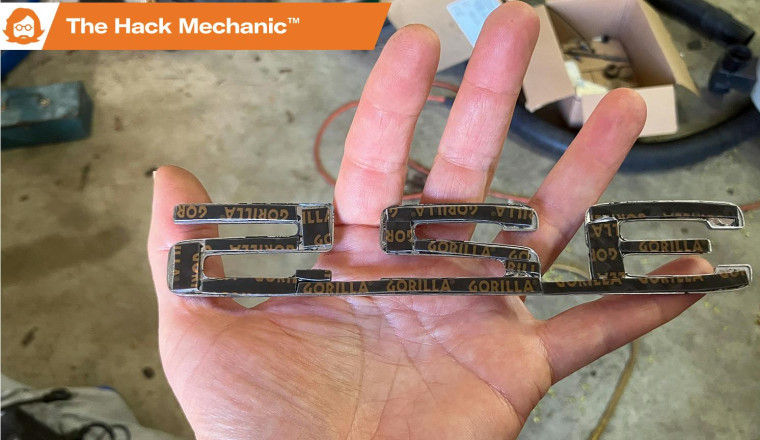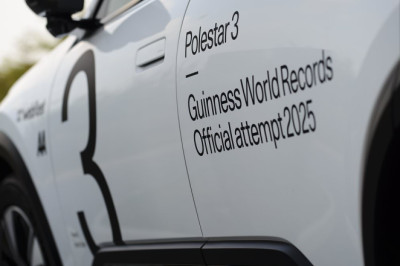
As I write this, I’m in a hotel room in Staunton, Virginia, on the way to “The Vintage,” the annual vintage BMW event I attend in Asheville, North Carolina. I’m driving the FrankenThirty—the salvage-titled 1988 BMW E30 325is that’s a bit like those dolls that Sid created in the first Toy Story movie. I won’t spoil the ending of the “Will he make it or won’t he?” story. In fact, I can’t, because the ending hasn’t happened yet.
But I will do two things: First, let’s set up the trip from the standpoint of what I talk about over and over again: The Big Seven things most likely to strand a vintage car, and what I did or didn’t do about them prior to the trip. Second, I’ll tell you the last repair I did before I hit the road.
Ignition System: On a vintage car with points and a condenser, the ignition system is one of the most likely things to strand you by the side of the road due to the points closing up (or, with the trend of abysmal quality of these parts the past ten years, the nylon block snapping off the points or a new condenser simply failing). The BMW E30 isn’t so new that it has coil-on-plug ignition, but it’s new enough that it has Motronic digital engine management (not just electronic ignition—so yeah, no points—but also computer-controlled spark advance). As I wrote about here, due to a broken bolt, the not-exactly-a-distributor-cap wasn’t held on securely, so prior to the trip, I drilled the bolt enough to thread a smaller bolt into it to secure the cap. I also brought along a spare crankshaft position sensor with me, as on a modern car, that’s the thing most likely to cause a no-spark condition.
Fuel Delivery System: I believe that, up to 9/87 (that is, pre-facelift), BMW E30s had two fuel pumps—one inside the fuel tank, and another one under the car. Because this car has a 7/29/87 build date, and because it was rebuilt from a salvage title using an earlier car, any pre- or post-facelift parts question is a crapshoot, and I’ve never lifted up the back seat and looked at the gas tank to see if there’s an in-tank fuel pump. Plus, due to the poor quality of many new parts, replacing a perfectly functional original fuel pump isn’t the slam-dunk that it used to be. When I bought and resurrected the car, I replaced any pillowy-soft fuel hoses and the fuel filter. And I packed a spare under-car fuel pump and called that good enough.
Cooling System: The water pump and most of the under-hood cooling hoses were replaced as part of the car’s sort-out last fall, and what appeared to be a good used radiator was installed. I didn’t, however, replace the viscous fan clutch or the fan. These are 37-year-old parts, and I did have a fan shatter on one trip down here a few years ago, so there is a certain amount of risk in that.
Charging System: I pulled the voltage regulator and brush pack out of the alternator, visually inspected the brushes to verify they weren’t obviously worn, brought a spare regulator anyway, tested that the alternator puts out about 14 volts with the engine running, and drive with a cigarette-lighter voltmeter, as is my practice road-tripping any vintage car.
Belts: The toothed timing belt (two photos up) was replaced last fall, and the three V-belts (fan, power steering, a/c compressor) were replaced prior to the trip.
Clutch Hydraulics: I’ll admit that I’m rolling the dice with this one. When I bought the car last August, the top end of the clutch hydraulic line was so soft and swollen that it was falling off the fluid reservoir. I cut the swollen end off, but then it was too short to reach and seal. In a “just for now” klugey fix, rather than replace the line, I hose-clamped a short line to the reservoir and a 90-degree barbed fitting, and clamped the top of the hose to it. It’s still on there. I meant to replace the entire line, as well as prophylactically replace the clutch slave cylinder, or at least to buy one and have it with me as a spare, but I never got around to it. So I’ll feel stupid if I’m in traffic and the clutch pedal flops to the floor without resistance, or depresses but doesn’t allow me to shift into gear.
Ball Joints: I include ball joints on this list because, if they fail, you lose control of the car, so you can’t afford to be wrong about it. When I bought the car, it had one bad ball joint. The E30 is modern enough that the ball joints are tightly integrated with the lower control arms, and the smart thing to do is just replace the arms. I did both sides.
So my prep didn’t cover every item, but it was far more than replacing only obviously broken items.
On the final repairs side, I replaced the cat-back section of the exhaust, and did another round of de-mousing, but I’ve written so much about exhaust and mice that if I try to do it again, I’m afraid my editor might take drastic measures. [We’ve got our eyes on you, RS!—EE] Okay, two exhaust photos and then we’ll move on. But no mice.
Having gotten the car’s air conditioning working and taken it on a 200-mile shakedown drive down to Connecticut and back a couple of weeks ago, the FrankenThirty felt so good and I felt so confident about its condition that the last two repairs I did prior to the trip were utterly frivolous.
The first was that I affixed the badge to the trunk lid. According to the title, the CarFax, and a model-specific online tool called BMW VIN Decoder, the car is a 1988 325is, which is one of the reasons I bought it. The “is” is a sport package consisting of a collection of individual options—sport suspension, limited-slip differential, sport seats, sport steering wheel, front and rear air dams, and a few other things that were available on North American cars, but the 325is technically isn’t a separate model. When you look up 1988 325is on most websites, I believe that they use the “is” designation to delineate the two-door cars from the four-door ones. To tell if a car was originally an “is,” you need to run it through the VIN Decoder and see if it was built with the options for the suspension, limited slip, and interior goodies. This car was. The fact that it got totaled in 1992 and was rebuilt with the front clip of an earlier car dramatically affects its value, but doesn’t change the fact that the car is a true 325is, and on its first appearance at the big dance, I wanted it to wear that corsage on its dress.
When I bought the car, the “325” and “i” badges were on the back floor, but the “s” badge was lost. The dealer price of the E30 letter “s” badge is about $42. Fortunately, my shakedown trip to CT included a stop at a fellow’s house who sells used BMW E30 parts, and I was able to pick up the “s” for ten bucks, as well as a bunch of other well-priced parts. I then spent a wonderfully focused hour cutting double-sided Gorilla Tape, putting it on the back of the badges, and affixing it to the back of the trunk lid.
The very last thing I did prior to departure was install a little colored band on the car’s sport steering wheel. This little piece, about the size of a doll’s bracelet, was originally part of the steering wheel, so I was completing it, not adding bling that wasn’t supposed to be there. It’s about $30 if you click and buy one on eBay, but they’re actually cheaper at the dealer, closer to $20. I needed a few dealer-only items for the Bavaria (which I’m thinking of selling) anyway, so I ordered them all through a local dealership in Boston so I could pick them up and not have to pay for shipping. I got the call saying that the parts had arrived the day before I left for Asheville. I took the hour to drive into the city (and patted myself on the back that I had the time to do that instead of needing to do essential repairs right down to the wire), came home, pulled the backing off the adhesive tape that holds the badge to the steering wheel, and snapped it into place.
I’m usually the guy who, when people are obsessed with completing all the little trim bits on a car, says “First, you’re never actually “completing” anything on a vintage car, and second, once this piece is installed, spoiler alert, you won’t actually be any happier.” But the degree to which looking down on the steering wheel and seeing this little colored band makes me happy is so unlike me that it just isn’t right.
Next week: The rest of the story of the FrankenThirty’s trip to The Vintage. Once I know the ending.
***
Rob’s latest book, The Best Of The Hack Mechanic™: 35 years of hacks, kluges, and assorted automotive mayhem, is available on Amazon here. His other seven books are available here on Amazon, or you can order personally inscribed copies from Rob’s website, www.robsiegel.com.
Got a link to any articles elaborating the specs/condition of the Bavaria? You keep murmuring about selling it and I gotta admit, I still miss mine that I parted with in 1995.
It’s been sold.
The Hack Mechanic’s version of “PSYCHE”!
The Hack Mechanic’s version of “PSYCHE”!














